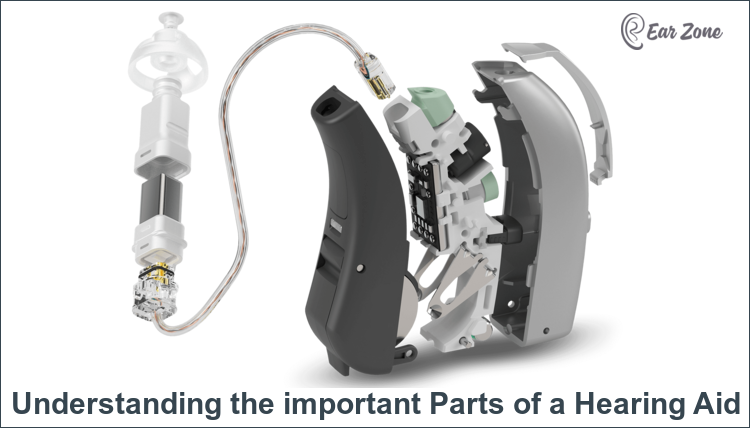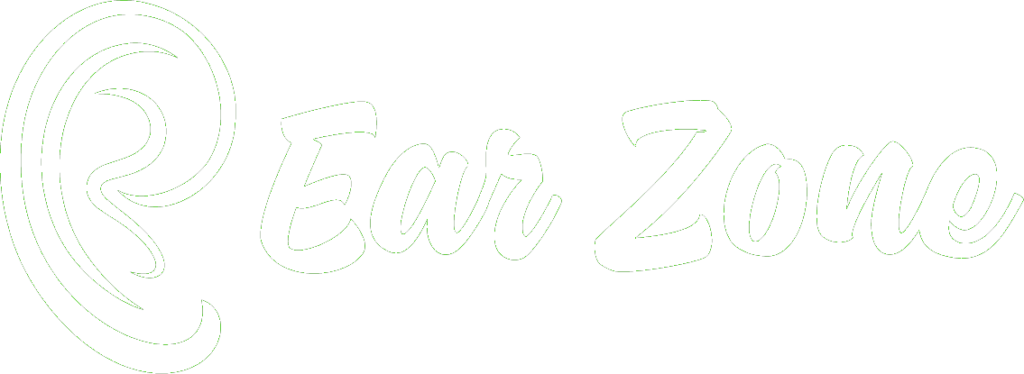Flying with hearing aids can be a challenging experience, especially if it is your first flight after being fitted with new hearing aids. Countless thoughts flash across your mind as you pack for the trip. Will you catch all the important airport announcements? Is it okay to wear hearing aids on a plane? And can you go through airport security with hearing aids?
Do not worry; this blog covers all your concerns and helps you prepare for a comfortable, trouble-free flight.
Can You Wear Hearing Aids on a Plane?
Yes, you can wear hearing aids on the plane and enjoy your journey. In addition to other helpful tips for flying with hearing aids, we will also provide guidance on using your hearing aids with the airplane entertainment system. Let us address the challenges you might face while flying with hearing aids, in the order they typically occur.
Pre-Travel Checklist if Flying with Hearing Aids
- Inform the airline about your hearing aids at the time of booking. The airlines convey information to the cabin crew, and communication on the flight is easier when the crew is aware.
- You can request special services such as preboarding at the time of booking your flight.
- The Air Carrier Access Act and ADA guidelines provide benefits to travelers with hearing loss, including accessible reservation services.
The Airport Announcement Challenge
- Many airports have installed hearing loops for the benefit of hearing aid users. Check with your audiologist if your hearing aid has a telephone coil or “T” mode.
- Confirm with your audiologist if your hearing aid has been programmed for “speech in noise.” This mode reduces the surrounding noise, helping you hear better.
- Download the airline app; the app will update you on all announcements concerning your flight.
- As a backup, download a speech-to-text app on your phone.
- The Federal Aviation Administration (FAA) Reauthorization Act of 2024 mandates that all airport gates, counters, ticketing areas, and customer service desks must display visual alerts for important announcements, such as boarding calls, gate changes, and emergency information.
Hearing Aids and Airport Security
Can you wear hearing aids through airport security? This is a common concern for hearing aid users. The short answer is yes! You can continue using them throughout the flight.
TSA And Hearing Aids
TSA or The Transportation Security Administration does not require you to remove hearing aids or cochlear implants during security checks. However, additional screening may be required if the device triggers an alarm.
A TSA statement mentions that hearing devices are unaffected by X-ray inspection or metal detectors. However, some manufacturers caution that X-rays may damage hearing aid microphones. Preferably avoid placing them in plastic bins or luggage that is screened by X-rays.
To avoid potential issues, you can request a pat-down and visual inspection of the hearing aids. TSA officers are trained to assist individuals with hearing disabilities during the screening process.
TSA Notification Card
To avoid delays and complications during security checks, it is advisable to carry a TSA Notification Card. You may inform the TSA officer of your disability or medical condition by showing your TSA Notification Card, or provide medical documentation.

Hearing Aid Batteries and Flying
You can carry hearing aid batteries on flights, and should always keep extra batteries in your handbag. Screening does not affect the performance of these accessories. Most modern hearing aids have built-in rechargeable batteries that cannot be removed.
Hearing aid batteries can be placed in the plastic bins, as exposure to X-rays does not damage batteries or chargers, but it is advisable to avoid exposing your hearing aids to X-rays.
Hearing Aids on Planes
As the flight is about to take off, the flight staff requests passengers to turn off all the electronic devices. This announcement does not apply to passengers flying with hearing aids.
You can continue to use hearing aids because they do not emit electromagnetic waves. Some electronic devices emit electromagnetic waves that can interfere with the aircraft’s communication system.
Flying With Bluetooth Hearing Aids
You can use Bluetooth hearing aids as they operate at a frequency of 2.4 GHz, a frequency generally considered safe. However, it is advisable to temporarily disable the Bluetooth function as an additional precaution.
Some hearing aid brands offer a dedicated “flight mode.” If your hearing aids have the flight mode feature, it is a good idea to activate it until the captain announces that the electronic devices can be used.
What Is Flight Mode on Hearing Aids
When you activate the flight mode on your hearing aids, the Bluetooth and wireless features switch off, and connectivity to the hearing aid app on your smartphone is disabled. However, the speech function of your hearing aid will continue to work and you can hear and communicate as usual.
How To Use Hearing Aid with Airplane Entertainment?
Using the IFE or an in-flight entertainment system can be a challenge, but not impossible. The following tips will help you enjoy your flight:
- Closed Captioning System
The Department of Transportation (DOT) has mandated that closed captioning will now be required for all in-flight entertainment systems on U.S. airlines. Although this enables passengers flying with hearing aids to watch programs, some passengers do not prefer this option.
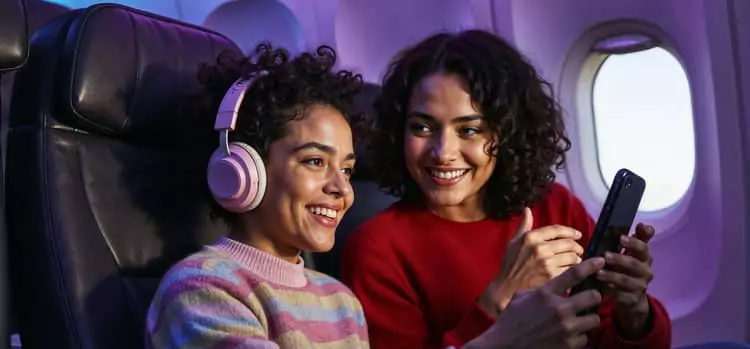
- Use Your Headphones to Connect to the IFE System
Carry your headphones that fit comfortably over your hearing aids. The standard 3.5 mm headphone jack that most headphones have, may not plug into the two-prong “airline connector.” You can buy an airline plug converter to connect your personal headphones.
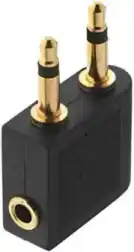
- Use A Neck Loop
If you own a neck loop and have been using it with your hearing aids, you can plug in the neck loop using the airline plug converter. - In-flight Bluetooth Transmitter
If your hearing aid is Bluetooth enabled, then an in-flight Bluetooth transmitter is a good option. Plug it into the airline connector and pair your hearing aids with the Bluetooth transmitter. No dangling wires or carrying bulky headphones.
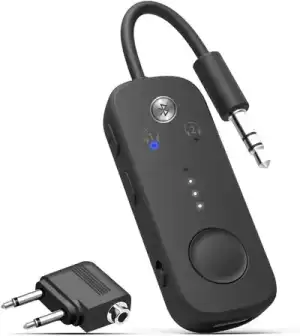
5. If you are not a big fan of in-flight entertainment, carry your laptop or tablet and pre-load the content you wish to watch.
Cabin Pressure and Hearing Aids
Aircraft cabin pressure sometimes leads to temporary pain and muffled hearing. You will have to readjust the settings or increase the volume of your hearing aids if you are unable to hear in normal settings. You may occasionally get the clogged ear feeling. Read our blog on how to clear clogged ears due to changes in altitude.
Flying with hearing aids doesn’t have to be stressful. All it requires is some extra planning and awareness. By following the tips in this ultimate guide, you will be well-equipped to handle any situation that arises during your journey.
Do not hesitate to reach out to airline staff or fellow passengers if you need assistance. Whether for business or pleasure, your hearing aids should not limit your ability to travel.



